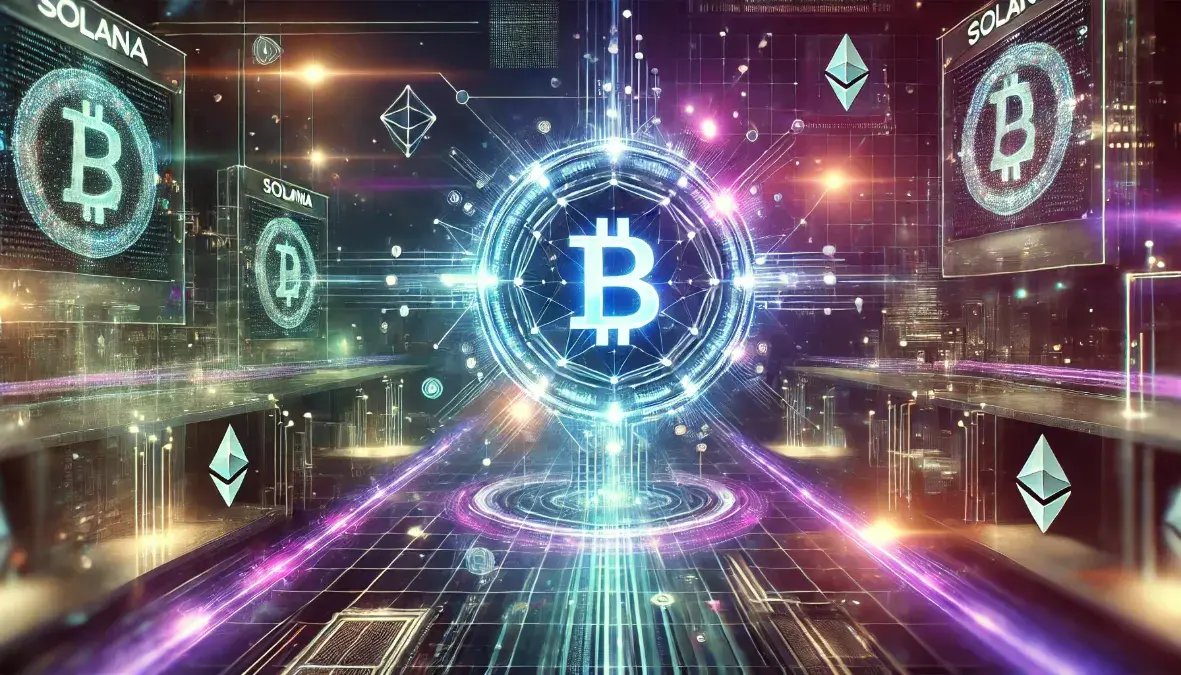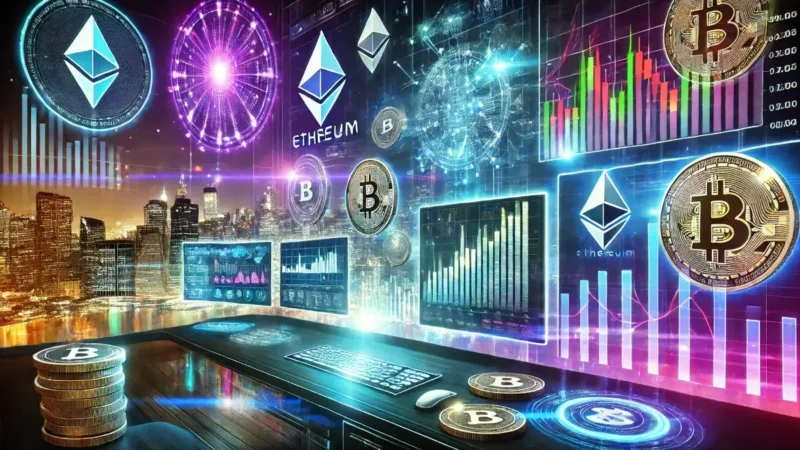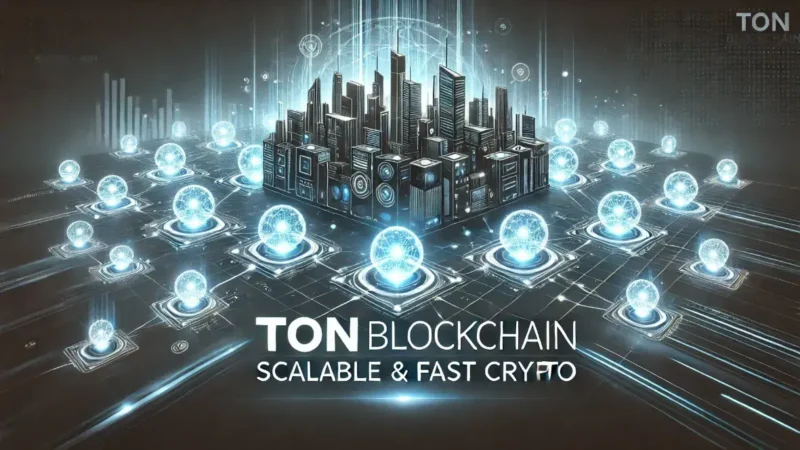Exploring Solana blockchain: The High-Performance Blockchain Solution

Introduction to Blockchain Technology
Blockchain technology has emerged as a revolutionary innovation, fundamentally changing the way we perceive and conduct transactions. At its core, a blockchain is a distributed ledger that records transactions across multiple computers, ensuring security and transparency. The decentralized nature of blockchain eliminates the need for a central authority, promoting trust among users. This decentralization is paired with immutability, meaning that once data has been recorded onto the blockchain, it cannot be altered without consensus from the network, thus providing a high degree of security against fraud and tampering.
The inception of blockchain technology can be traced back to Bitcoin, which was introduced in 2009 by an anonymous entity going by the pseudonym Satoshi Nakamoto. Designed primarily as a digital currency, Bitcoin leveraged blockchain to facilitate peer-to-peer transactions without the need for intermediary financial institutions. However, as the technology evolved, the applications of blockchain expanded far beyond cryptocurrencies. Various industries, including finance, healthcare, and supply chain management, began exploring the implications of blockchain for improving transparency and traceability.
In recent years, new blockchain platforms have emerged, each with unique features tailored to specific needs. Among these, Solana blockchain has gained significant attention for its high-performance capabilities. Unlike earlier blockchains that often faced scalability issues, Solana utilizes a unique consensus mechanism known as Proof of History, enabling remarkably fast transaction speeds and lower fees. This positions it as a viable solution for decentralized applications and financial services, challenging traditional systems in unprecedented ways. As we delve deeper into the characteristics and innovations of Solana, it becomes essential to understand the foundational elements of blockchain technology that inform its design and functionality.
What Makes Solana Unique?
Solana distinguishes itself in the blockchain landscape with a combination of high throughput, minimal transaction costs, and a revolutionary consensus mechanism referred to as Proof of History (PoH). The platform’s architecture is specifically designed to enhance efficiency and scalability, enabling it to handle thousands of transactions per second without compromising on security or decentralization.
One of the most important characteristics of Solana is its high throughput capability. Traditional blockchain networks often experience slow transaction processing during peak periods, leading to congestion and user dissatisfaction. In contrast, Solana’s innovative design allows it to process up to 65,000 transactions per second under optimal conditions. This is made possible through parallel processing of transactions, where multiple transactions are executed simultaneously, thus reducing the time taken for each transaction to be confirmed.
Another defining feature of Solana is its low transaction costs, which are a critical factor for developers and users alike. On average, transaction fees on Solana range from $0.00025 to $0.01, making it an affordable option for deploying decentralized applications (dApps) and conducting transactions. This low-cost structure is vital for encouraging widespread adoption, allowing users to interact with blockchain applications without the concern of prohibitive fees.
Moreover, Solana’s Proof of History boasts a unique time-stamping mechanism that organizes transactions in a verifiable way, allowing validators to process transactions more efficiently. Unlike traditional consensus algorithms that require nodes to communicate extensively, Proof of History provides a cryptographic proof that verifies the sequence of events and transactions, significantly reducing the time required for validation and improving overall network performance.
Through these distinctive features, Solana emerges as a practical choice for developers aiming to create high-performance decentralized applications and services, thus carving a niche in the increasingly competitive blockchain market.
Understanding Solana’s Architecture
Solana stands out in the blockchain landscape due to its unique architecture designed to address performance and scalability issues commonly faced by traditional blockchain networks. At its core, the Solana blockchain utilizes a highly efficient runtime environment that optimizes transaction execution speeds. This architecture is a significant contributor to Solana’s reputation as a high-performance blockchain solution.
Central to Solana’s execution is the Solana Runtime, a modular framework that supports the development and execution of smart contracts. Smart contracts on Solana are written in Rust, C, and C++, allowing developers familiar with these languages to leverage their existing skills. The runtime operates on an innovative system called the Sealevel, which is responsible for processing transactions concurrently. This parallel transaction processing is a key feature that enhances scalability, allowing Solana to handle thousands of transactions per second without compromising on efficiency.
The role of validators is another essential component in the architecture of the Solana blockchain. Validators are responsible for confirming transactions and maintaining network security. Utilizing a unique consensus mechanism known as Proof of History (PoH), Solana provides a timestamping function that allows validators to quickly identify the order of transactions. This feature minimizes the time required for confirmations and reinforces the network’s overall throughput.
Overall, the architecture of Solana, which integrates its runtime, validators, and smart contracts, creates an ecosystem capable of supporting high-volume applications and services. By employing techniques such as parallel transaction processing, Solana achieves exceptional scalability that distinguishes it from other blockchain solutions. As the adoption of blockchain technology continues to grow, Solana’s robust structure ensures it remains a key player in the evolving digital landscape.
The Consensus Mechanism: Proof of History
Solana employs a novel consensus mechanism known as Proof of History (PoH), which essentially serves as a cryptographic timestamp. This innovative approach allows the network to order transactions without the need for extensive communication between nodes. Unlike traditional consensus mechanisms that require nodes to communicate and validate transactions simultaneously, PoH provides a historical record that proves that an event has occurred at a specific moment in time. This is achieved using a sequence of computations, which are cryptographically verifiable and create a unique digital fingerprint for each transaction.
The significance of PoH in the context of blockchain Solana cannot be overstated. By integrating this mechanism, Solana significantly enhances its transaction throughput and overall efficiency. The combination of PoH with Solana’s Proof of Stake (PoS) system enables the network to process thousands of transactions per second, making it one of the fastest blockchain solutions available. As transactions are timestamped and ordered efficiently, the requirement for nodes to engage in time-consuming communication is drastically reduced, leading to a streamlined validation process.
However, while Proof of History offers numerous advantages, it is not without its challenges. One major concern is the reliance on accurate and timely clock synchronization between validators, which can create vulnerabilities if not managed correctly. Additionally, although PoH improves throughput, it may necessitate sophisticated hardware and infrastructure capabilities, which could hinder the accessibility for smaller validators. Navigating these challenges is crucial for the long-term sustainability and security of the blockchain Solana ecosystem.
Use Cases of Solana
The Solana blockchain has emerged as a robust framework that caters to a diverse array of applications across multiple industries. One of the most prominent use cases is in the realm of decentralized finance (DeFi). With its high throughput and low transaction costs, Solana enables developers to construct sophisticated financial applications that facilitate lending, borrowing, trading, and asset management. The network’s ability to handle thousands of transactions per second allows for seamless trading experiences, which is crucial for attracting users in a highly competitive DeFi landscape.
In addition to DeFi, the Solana blockchain has gained significant traction in the non-fungible token (NFT) space. Artists and creators utilize this platform to tokenize their digital assets, ensuring provenance and ownership through blockchain technology. Solana’s scalability plays a vital role here, allowing for minting and trading of NFTs without the concerns of high gas fees often associated with other networks. Projects like Solanart or Metaplex have demonstrated how Solana can support vibrant NFT marketplaces, enabling creators to reach broader audiences and fostering a thriving digital art community.
Moreover, gaming is another sector revolutionized by Solana’s innovative capabilities. The blockchain provides the ideal environment for developing play-to-earn models and interactive gaming experiences. Game developers leverage Solana’s infrastructure to build games that allow players to truly own in-game assets, facilitate trading among users, and engage in decentralized platforms. Notable examples include games that incorporate token-based economies, creating ecosystems where players can generate real-world value from their in-game activities.
Overall, the use cases for blockchain Solana extend well beyond traditional applications, demonstrating versatility and the potential for transformative solutions across various sectors.
Development on Solana: Tools and Ecosystem
The development experience on the Solana blockchain is enriched by a variety of tools and resources that facilitate the creation of decentralized applications (dApps). At the core of this ecosystem are programming languages such as Rust and C, which are favored for their performance and efficiency. Rust, in particular, is known for its memory safety features, making it an excellent choice for developers who prioritize security in their applications. This focus on safety, combined with the speed of execution offered by Solana, positions it as an attractive option for building robust blockchain solutions.
Additionally, the Solana ecosystem offers a rich set of Software Development Kits (SDKs) and APIs that streamline the development process. These tools allow developers to interact seamlessly with the blockchain, whether they are building smart contracts, deploying dApps, or integrating with other services in the Solana network. The availability of these resources significantly reduces the barrier to entry for new developers entering the space, enabling them to leverage the unique features of Solana’s high-performance architecture.
Community support also plays a crucial role in the success of Solana as a blockchain platform. A vibrant community of developers and enthusiasts actively contributes to forums, online groups, and documentation, providing assistance and guidance for newcomers. This collaborative environment fosters innovation and encourages knowledge sharing, further enhancing the overall developer experience. Moreover, the ecosystem continues to grow, with numerous dApps and services being developed, illustrating the increasing interest in Solana as a viable blockchain solution.
In summary, the development landscape on the Solana blockchain is marked by powerful tools, programming languages, and an engaged community, all working together to enable the creation of sophisticated dApps and services. This robust infrastructure positions Solana as a leading choice for developers in the blockchain space.
Challenges and Criticisms Facing Solana
Since its inception, blockchain Solana has garnered significant attention for its high-speed transaction capabilities and low fees; however, it has not been free from challenges and criticisms. One of the primary concerns raised by users and experts alike is the frequency of network outages. These interruptions can significantly affect the reliability of the network, raising questions about its robustness in handling real-world applications. Notably, Solana experienced multiple outages during 2021 and 2022, which at times rendered decentralized applications (dApps) on the platform inoperable.
In addition to network reliability, security remains a pivotal issue. The rapid scaling of the Solana blockchain has sometimes outpaced its security measures. Critics argue that the complexity of its protocol may increase vulnerability to attacks, potentially jeopardizing user funds and data. For instance, security incidents have occurred that underscore the potential weaknesses in the system, prompting stakeholders to call for more stringent security protocols and resilience testing.
When compared to other blockchain platforms, Solana’s architecture has also faced scrutiny. While it is celebrated for its transaction speed and efficiency, some industry analysts contend that its reliance on a more centralized validator set may limit the spirit of decentralization that many cryptocurrency enthusiasts advocate for. This centralization aspect positions Solana in a challenging arena, particularly against decentralized networks such as Ethereum. The ongoing debate regarding the importance of decentralization versus performance continues to be a critical aspect of the discourse surrounding Solana.
These challenges highlight the ongoing development and improvement required for the Solana ecosystem. Although the blockchain has been successful in attaining significant traction, overcoming these hurdles is essential to ensure its longevity and sustainability in the rapidly evolving landscape of blockchain technology.
The Future of Solana and Blockchain Technology
The future of Solana appears promising, characterized by its capacity to scale and innovate within the rapidly evolving landscape of blockchain technology. As a high-performance blockchain solution, Solana is positioned to address the critical requirements of speed and cost-effectiveness that contemporary decentralized applications demand. With its unique architecture, Solana is anticipated to facilitate advancements that will push the boundaries of what blockchain technology can achieve.
One of the significant areas for growth lies in the integration of Solana with emerging technologies. For instance, the potential interplay between Solana and artificial intelligence (AI) could lead to sophisticated applications that enhance decision-making processes and optimize operations across various sectors. By harnessing the processing capabilities of Solana, AI algorithms could leverage real-time data streams available on the blockchain, enabling more efficient analytics and insights in diverse industries.
Similarly, the Internet of Things (IoT) presents another avenue for the expansion of Solana. With the increasing adoption of IoT devices, the need for secure, reliable, and scalable blockchain infrastructure is paramount. Solana provides the foundation for seamless communication and data exchange among IoT devices, ensuring that transactions are recorded accurately and immutably. This integration could trigger immense growth in sectors such as supply chain management, smart cities, and healthcare, where Solana’s capabilities can optimize operations and enhance connectivity.
Moreover, as Solana continues to evolve, its ecosystem is expected to foster a new wave of decentralized finance (DeFi) applications that leverage its speed and efficiency. This can potentially reshape traditional financial markets by enabling innovative financial products that are more accessible and affordable. Solana’s growing community and developer support further signal a vibrant future, promising to harness its technology for various use cases.
Stay informed, read the latest crypto news in real time!
Conclusion: Embracing the Solana Ecosystem
Throughout this blog post, we have explored the notable features and capabilities of the Solana blockchain. Solana’s innovative architecture allows for unparalleled transaction speed and cost efficiency, positioning it as a competitive player in the ever-evolving blockchain landscape. One aspect that stands out is its unique consensus mechanism, known as Proof of History, which significantly enhances throughput while maintaining security, making it an attractive option for developers and businesses alike.
The potential applications of the Solana network are vast, ranging from decentralized finance (DeFi) projects to non-fungible tokens (NFTs) and beyond. As we delve deeper into the digital era, blockchain technology like Solana paves the way for a more decentralized and accessible financial system. With its growing ecosystem of projects and active community support, Solana is increasingly becoming a focal point for those interested in harnessing the benefits that blockchain can offer.
Investors also have reason to consider Solana as a promising opportunity. Its strategic partnerships and continuous developments enhance its credibility and potential for future growth. As the demand for efficient and scalable solutions increases, blockchain platforms like Solana are not only meeting these demands but also setting new standards for performance and usability.
In essence, the Solana ecosystem represents a significant leap forward in the world of blockchain technology. By embracing Solana, developers, investors, and users can actively participate in the transformation of various sectors, supporting innovation and building a more inclusive future. Therefore, it is prudent to stay informed about ongoing advancements in the Solana blockchain and to explore the opportunities it presents for both investment and development.






